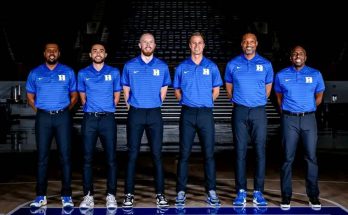The Texas Longhorns’ baseball program has long been one of college baseball’s most storied and respected names, but 2025 has offered something new, even by their elite standards. In their debut season in the Southeastern Conference, the Longhorns have not only made a statement—they’ve planted their flag atop the nation’s most competitive baseball league. With the regular season wrapped up, Texas has officially clinched the No. 1 overall seed in the SEC Tournament, earning a coveted two-round bye and sending a clear message to the rest of the conference: the new kids on the block are already running the neighborhood.
For Texas fans, this accomplishment feels like both a triumphant validation of their program’s historic stature and a challenge answered. The move from the Big 12 to the SEC brought with it countless questions. Would the Longhorns be able to adapt to the SEC’s physical, pitching-heavy brand of baseball? Could they hang with the likes of LSU, Arkansas, Florida, and Vanderbilt—the bluebloods of a conference known for producing champions? Not only have they hung with them, they’ve outpaced them. Texas didn’t just win the SEC regular-season title—they did it in style, finishing with a dominant record in league play and emerging from series after series with their heads held high and their bats on fire.
What makes this year’s Texas squad so effective isn’t just their talent—though there’s no shortage of that. It’s the balance. Head coach David Pierce has orchestrated a roster that mixes veteran leadership with rising underclassmen stars, forming a cohesive unit that plays with purpose, poise, and an edge. The pitching rotation has been a consistent strength, anchored by an ace who has turned into a legitimate Golden Spikes Award contender. Behind him, the depth has been key, with reliable arms stepping up in both midweek matchups and critical SEC series. The bullpen, often the Achilles’ heel for teams facing the weekly SEC grind, has instead been a pillar of strength for the Longhorns, converting save opportunities with cold-blooded precision and rescuing starters when needed.
Offensively, Texas has become a nightmare for opposing pitchers. They don’t just rely on one or two big bats; the entire lineup is dangerous. There’s power at the top, speed in the middle, and discipline at the bottom. One of the keys to their season has been situational hitting—clutch two-out RBIs, productive outs, and a seemingly innate ability to extend innings. This is a team that wears pitchers down, taking full advantage of mistakes and never letting up. Whether it’s a five-run first inning or a two-out rally in the ninth, the Longhorns always seem to find a way to apply pressure.
Defensively, the Longhorns have been among the nation’s most polished units. The infield, led by a sure-handed shortstop with a rocket arm, has turned countless double plays and made the routine look automatic. The outfield, not to be outdone, has repeatedly turned hits into outs, with highlight-reel catches and perfect throws that have gunned down runners trying to take an extra base. It’s the kind of defense that doesn’t just save runs—it deflates opponents.
The mental toughness of this team is perhaps its most underrated quality. In their first SEC road trip, Texas found itself down late in a hostile environment against a top-10 opponent. Rather than fold, they chipped away at the deficit, forced extra innings, and eventually walked away with a statement win that set the tone for the rest of the season. That same resilience showed up in series against traditional SEC powers. They embraced the target on their backs and responded with poise, proving that their success was no fluke.
There’s also something to be said about the Longhorns’ ability to stay healthy and fresh over the course of the grueling SEC slate. Conditioning and player management have played a vital role in Texas’ climb to the top. Coach Pierce and his staff have expertly rotated the lineup, strategically resting players and managing pitch counts to ensure that the team peaked at the right time. That discipline paid off down the stretch as Texas surged into the postseason without the fatigue or attrition that plagued other contenders.
Earning the No. 1 seed and a two-round bye in the SEC Tournament is a monumental achievement, especially in a league as deep and unforgiving as the SEC. It gives Texas a rare and valuable luxury: rest. While other teams battle in the early rounds, burning through arms and exposing weaknesses, the Longhorns can regroup, recover, and refocus. The bye also offers a psychological edge. As the top seed, Texas enters the tournament not as hopeful underdogs or dangerous dark horses, but as the hunted. They’ve become the measuring stick for success, and every team left in the field will be trying to knock them off.
But Texas is no stranger to pressure. This is a program with six national championships, dozens of College World Series appearances, and a fan base that demands excellence. They’ve built this season brick by brick, series by series, and they now stand at the summit with a chance to do something truly special. A dominant SEC run is one thing. A deep run in the SEC Tournament—and potentially in Omaha—is another. The journey is far from over, but the foundation is stronger than ever.



